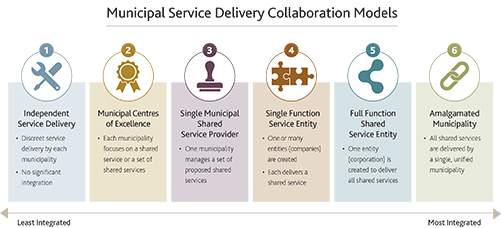Part 1 – Challenges and the Path Towards Change
Municipalities across Canada struggle to balance growing citizen demands with ever-reduced budgets. While recognizing the need for transformation, knowing how to operate more efficiently and improve citizen experience can be challenging.
In the vast Canadian landscape, municipalities can include cities with millions of residents and hamlets with fewer than 10 people. Translating complex service requirements and citizen expectations requires new strategic and corporate visions of service delivery, as well as management models, to be successful – financially and socially.
More with Less as a Driver
The reality is citizens expect more than many small- to mid-sized municipal governments can provide – more on-line services, more transparency, more real-time interactions and all without raising taxes. And when property taxes provide the bulk of municipal funding, the options appear limited, particularly as provincial governments increasingly push towards consolidation.
For some of the more than 3,600 Canadian municipalities, amalgamation with their neighbours could be the answer to a shrinking population and tax base. Under a single municipality, amalgamation can lead to enhanced service delivery, alternative delivery models and innovative governance models. For example, three of Nova Scotia’s 50 municipalities are regional municipalities, each of the three governing and providing an umbrella of services to formerly incorporated cities, towns and communities in their region.
The drawbacks of an amalgamation process include the risks of alienating groups of citizens, downsizing departments instead of rightsizing them and bias toward one entity or the other. The fear of losing a community’s unique identity on merging with another village or town also can stymie efforts to change governance models – often stifling opportunities to grow.
New Governance and Service Pathways
Amalgamation isn’t the only option for municipal governments seeking innovative ways to operate more efficiently while improving stakeholders’ service experience. Collaborative frameworks offer a number of options, from single to multiple shared services.
For example, several villages in central Alberta have joint purchase and procurement agreements for paving their roads, enabling them to get competitive bids on the larger projects rather than smaller, individual projects. They also share snow removal equipment and buy gravel from the municipal district. Each community keeps their businesses separate but shares services delivery.
Such collaboration is the basis of the Intermunicipal Collaboration Framework (ICF) legislated in Alberta’s Modernized Municipal Government Act in 2016. Municipalities with common boundaries must create an ICF with each other by March 2020, specifying what and how services are funded, to better allocate resources and funding. Based on the results, they might pool resources or agree a service is better provided by an individual municipal government.

Since no two regions are the same, solutions will vary according to resources, expertise and vision. A first step would be a review of services, how they are managed and what can be done to improve delivery – including synergies with neighbouring municipalities – to provide perspective on potential benefits, costs and impact of change.
For more information, contact Chris Lavin, Partner, Public Sector Services, at 780.733.8640 or [email protected]



